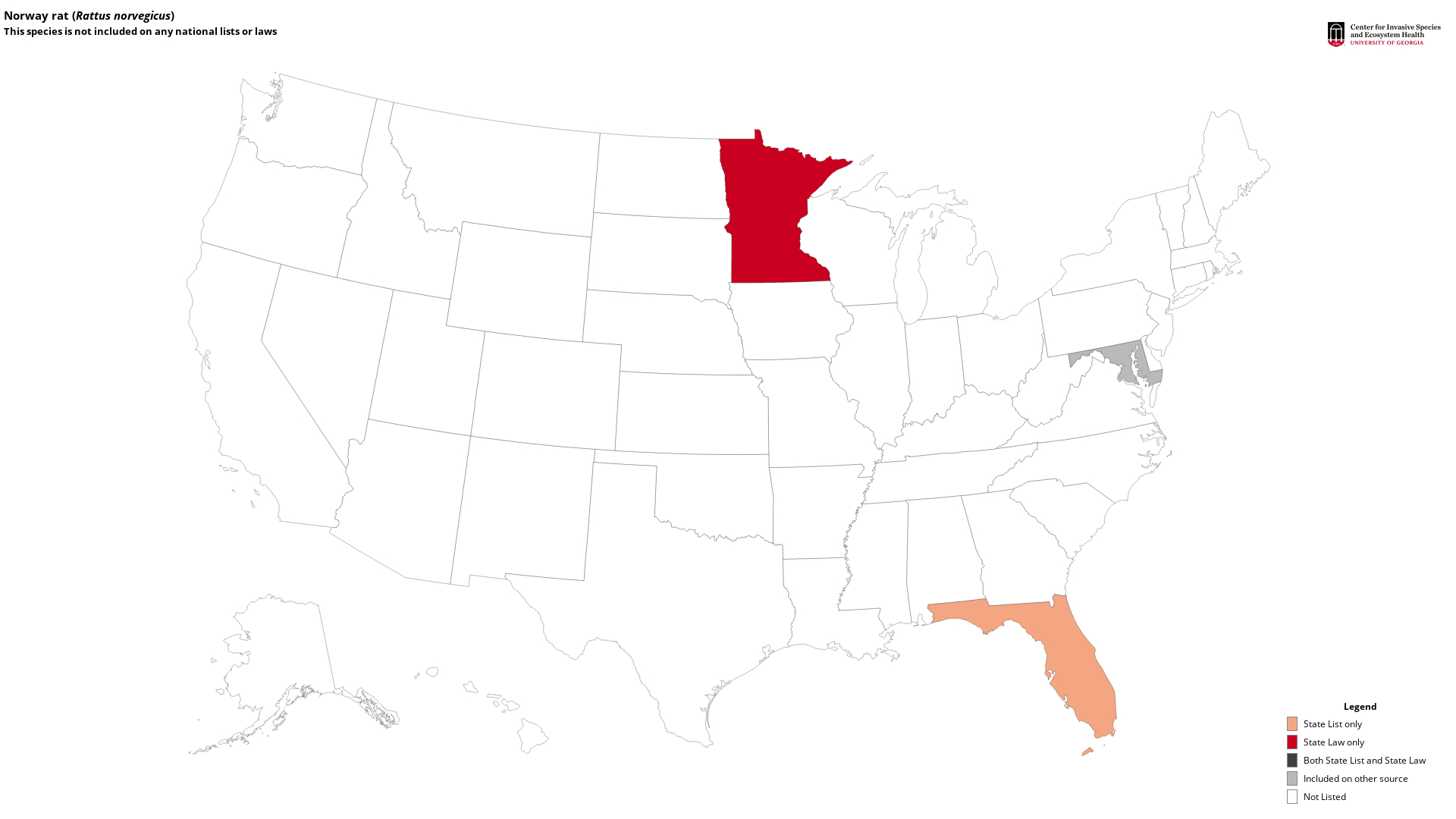Norway rat
(Rattus norvegicus)
This species is Introduced in the United States
Identification
Description
They usually are grayish but may vary from pure gray to a blackish- or reddish-brown. The length of the tail in a Norway rat is shorter than the length of the head and body together. The tail is dark on top and light underneath. The size often is exaggerated. The body length is up to 10 inches, and these rats average 16 inches from nose to tail.
Life Cycle
Juvenile and adult. They have moderately high reproductive rates with eight to nine pups per litter, which are weaned in about a month. Females may produce up to 20 pups. Wild rats typically live five to 12 months but can live up to three years.
Where To Look
Norway rats are burrowers and thrive in environments where there is clutter or garbage. They burrow along foundations and under debris. They are good swimmers and may enter buildings through the plumbing. These rodents commonly will follow sewers, ditches, waterways and creeks when dispersing to new areas. The home range of these rats may be as much as 50 yards (150 feet); displaced rats may travel 1 to 2 miles, however.
Chemical
Resources
- Florida's Exotic Wildlife Species Detail - Florida Fish and Wildlife Conservation Commission
- Global Invasive Species Database - Invasive Species Specialist Group
- Animal Diversity Web - University of Michigan Museum of Zoology
- Wikipedia - Wikimedia Foundation, Inc
Selected Images
Maps
EDDMapS Distribution - This map is incomplete and is based only on current site and county level reports made by experts, herbaria, and literature. For more information, visit www.eddmaps.org
State Lists - This map identifies those states that have this species on their invasive species list or law.
Invasive Listing Sources
Taxonomic Rank
| Domain: Eukarya |
| Kingdom: Animalia |
| Phylum: Chordata |
| Class: Mammalia |
| Subclass: Theria |
| Order: Rodentia |
| Suborder: Myomorpha |
| Family: Muridae |
| Subfamily: Murinae |
| Genus: Rattus |
| Rattus norvegicus |
References
Common Name Reference: Integrated Taxonomic Information System on-line database.
Scientific Name Reference: Integrated Taxonomic Information System on-line database.


